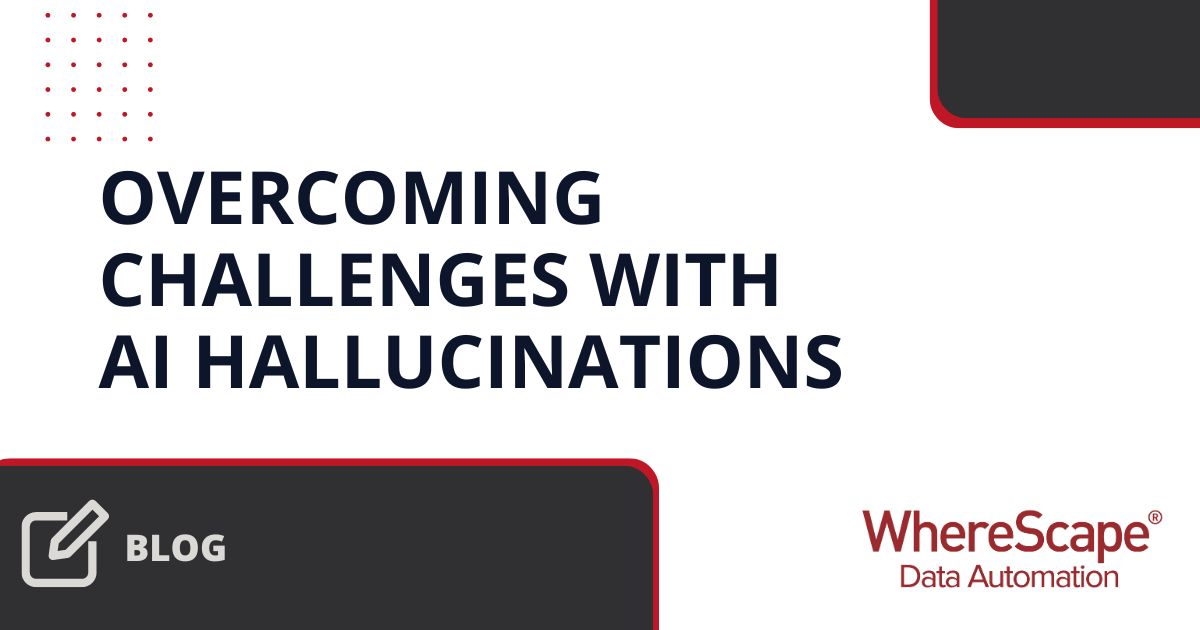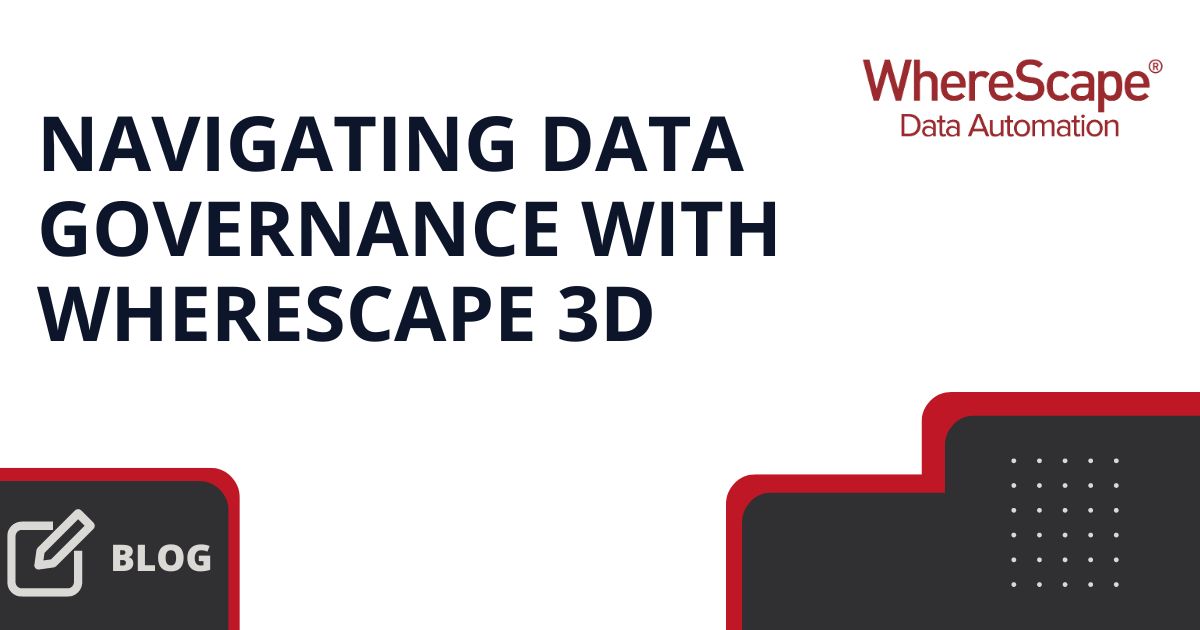Are you struggling to keep up with the...
Agile Data Warehouse Design for Rapid Prototyping
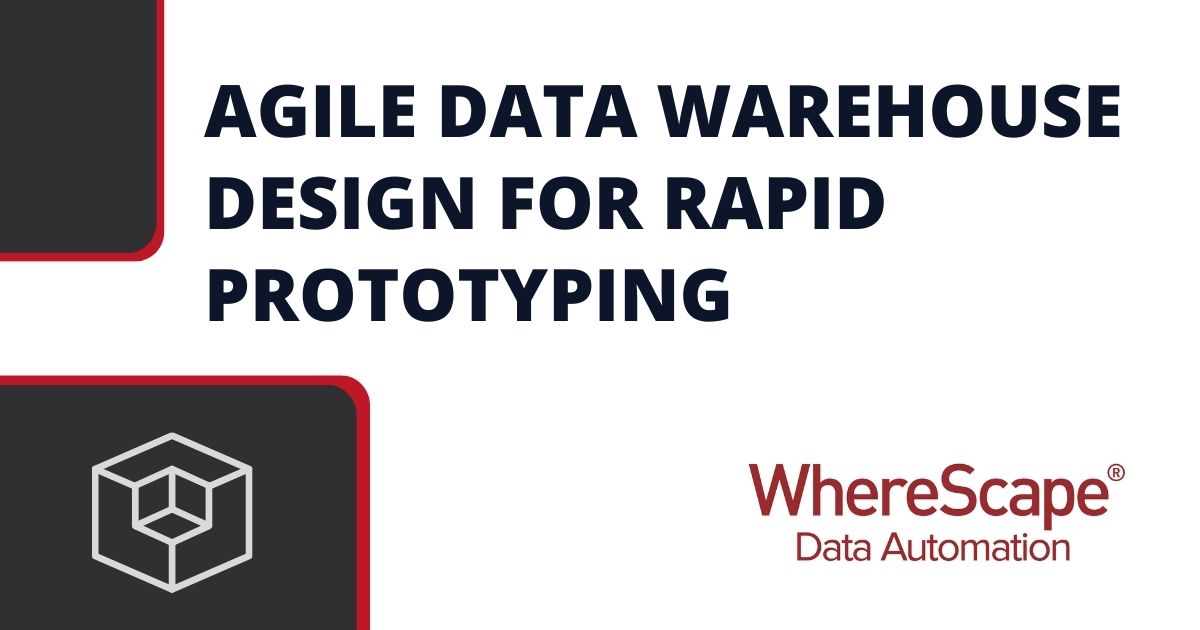
Agile Data Warehouse Design through Rapid Prototyping
While most people know WhereScape for its automated code generator that eradicates repetitive hand-coding tasks, there is another major way in which the software can save huge amounts of time and resources. Prototyping is a feature of the automated agile data warehouse design lifecycle that skips several manual steps. It allows the customer to visualize the design of the architecture they have requested, with full lineage, before the build takes place. There are two different ways to achieve this with WhereScape.
Agile Data Modeling
The most efficient pathway is through data-driven design, a process central to WhereScape RED, which not only aligns models closely with source systems but also excels in agile data integration, leveraging data virtualization techniques. This style of modeling empowers developers, data analysts, and data engineers to swiftly create a physical model using the business’s actual data, demonstrating its practical application.
Automated ELT
By incorporating data from diverse sources, this approach facilitates a comprehensive data integration strategy, crucial for effective data virtualization. It allows for a detailed prototype model, which is instrumental for data analysts and engineers in understanding and visualizing the data flow. This model vividly illustrates how the requirements will materialize in the data warehouse and how the various created objects interplay, providing a clear and actionable guide for data analysts and data engineers.
IT professionals can present this model to business stakeholders, allowing them to identify any desired changes or previously overlooked requirements. Once approved, the team can deploy the prototype as-is or restructure it to source from foundational data layers like a Data Vault or an Enterprise Data Warehouse (EDW). The prototype becomes a versatile tool for reporting and other functionalities while continuing to integrate seamlessly with the foundational data layer. This method is especially effective in constructing simpler data architectures, like a data mart, where agile data modeling and integration play pivotal roles.
WhereScape 3D: Crafting the Ideal Blueprint
WhereScape 3D specializes in scoping and modeling data sources into optimal blueprints before any data manipulation. This is particularly beneficial for intricate structures like Data Vaults, typically handled by specialist architects. Following a similar collaborative process with business stakeholders, the model transitions to RED for data population and physicalization.
Automated Data Modeling Benefits
Automating the scope, design, and modeling processes, WhereScape’s speed in creating prototypes is a game-changer. It’s the difference between securing model approval in mere hours versus six months; transforming drawn-out, costly projects into agile initiatives that deliver functional architecture in days, not months. Presenting a physical model to stakeholders while ideas are fresh fosters collaboration and facilitates swift, iterative adjustments. Without such a model, projects risk misinterpretation of requirements, leading to costly delays and revisions.
Agile Data Warehouse Design with Real-Time Data Accessibility
Before the advent of Data Warehouse Automation, businesses would relay requirements to IT, who then engaged siloed specialist teams for scoping, designing, modeling, and building the requested data warehouse or mart. This manual process, often spanning three to six months, frequently struggled to keep up with the dynamic nature of real-time data, resulting in designs that missed the mark due to evolving requirements or misunderstandings.
Traditional methodologies, while attempting to address complex data schemas, heightened the risk of late-stage errors, difficult and time-consuming to rectify, especially with hand-coding. Moreover, these approaches often fell short of making data accessible promptly, impeding the ability to leverage real-time insights.
Automated Prototyping
Automated prototyping allows stakeholders to check and sign off on the architecture at the modeling stage, ensuring that the business process aligns seamlessly with the planned structure. Then RED, serving as an efficient extract, transform, and load (ETL) data integration tool, completes all the steps from the physical model stage up to including documentation. It automates everything from the scoping of source systems to determine the location and quality of existing data, all the way through to generating DDL structures on your target database.
This is the actual code that loads your data onto your target, encompassing all transformations you would write to populate your data models with the necessary data sets, business logic, and so on, effectively managing the data stores.
WhereScape orchestrates the infrastructure you already have to work faster by using the power of the target database to do the transformation work in an ELT (Extract, Load, Transform) process. This approach leverages existing data and data sets efficiently, minimizing the need for extensive restructuring of business processes. It bypasses the slowdown associated with additional black boxes, a common issue with the 1990s ETL tools still in use today. RED uses stage tables and stage views to process data through the required steps, utilizing the patterns you already employ in your data stores.
If you need to make any changes at a later date, you can implement them much more quickly. WhereScape is metadata-driven. You can tweak the metadata behind this diagram without restarting the modeling process, as it automatically configures all upstream and downstream implications.
Agile Data Modeling at Atea
Atea is a Nordic IT infrastructure company that uses WhereScape to automate much of its manual data warehouse processes. This is how the company’s Chief Architect in Sweden, Torgil Hellman, describes the change he experienced when switching to Data Automation.
“My days used to be that I’d have the SQL Management Studio up and I was looking at SQL code. Now I don’t remember the last time I had to go into SQL Server because I can do everything I need in WhereScape. I spend much more time modeling and listening to what people’s demands are instead of changing code, running jobs, or making sure something works.
“For me, WhereScape is a gamechanger because when I go into meetings, I don’t have to spend time explaining the techy things, I can spend time listening to the needs of the business and do data modeling, and I can do it very quickly because it’s a very agile system. So if they want to have a new field or they want to put in something like a new dimension, a couple of hours later I have it in there, and I know it’s going to work.”
In summary, agile data warehouse design, especially when facilitated by WhereScape, represents a transformative approach to data management. Through agile prototyping and data modeling, we’ve seen how this method dramatically reduces the time and resources traditionally required in data warehouse projects. Key benefits include:
- Speed and Efficiency: Automated processes enable rapid prototyping, moving from concept to model in a fraction of the usual time.
- Enhanced Collaboration: Physical models and prototypes facilitate better communication between IT and business stakeholders, ensuring alignment of goals and requirements.
- Flexibility and Adaptability: Agile methodologies allow for quick adjustments, accommodating changes in business needs more effectively.
- Error Reduction: Early-stage visualization and approval of models significantly decrease the likelihood of costly errors in later stages.
This approach not only streamlines the technical process but also fosters a more collaborative, responsive, and efficient environment for both IT professionals and business stakeholders. Embracing WhereScape’s agile data warehousing solutions means stepping into a future where data management is no longer a bottleneck but a catalyst for innovation and growth.
Data Automation
Ready to transform your data management strategy? Don’t just take our word for it – experience the power and efficiency of WhereScape first-hand. Book a demo today and see how WhereScape can revolutionize your data warehouse design, turning complex processes into agile, efficient solutions that drive your business forward. Join the ranks of successful companies like Atea and empower your team with the tools they need to excel in today’s fast-paced data-driven world. Book your demo now or check out our free trial here.
Overcoming Challenges with AI Hallucinations
Conversing with your digital assistant on your smartphone, using facial recognition for security, traveling in autonomous vehicles, or browsing recommended products based on your search history - there is no denying AI is embedded in many aspects of our lives. AI has...
Navigating Data Governance with WhereScape 3D
Properly managing and organizing data allows businesses to not only understand crucial patterns and trends, but also to leverage that data in strategic ways that grow revenue over time. Data drives decision-making and paves the way for innovation when used properly....
Deep Dive into WhereScape RED: Features and Benefits
Transforming a business’s various databases and files into actionable insights and reports is crucial, but incredibly time-consuming with traditional tools. Fortunately, with data warehouse automation tools like WhereScape RED, organizations can take advantage of a...
Brief Insights from Gartner® Latest Report on Data Fabric and Data Mesh
In the rapidly evolving world of data management, distinguishing between the myriad of strategies and technologies can be daunting. The latest Gartner® report, "How Are Organizations Overcoming Issues to Start Their Data Fabric or Mesh?" provides critical insights...
ETL vs ELT: What are the Differences?
In data management, the debate between ETL and ELT strategies is at the forefront for organizations aiming to refine their approach to handling vast amounts of data. Each method, ETL vs ELT, offers a unique pathway for transferring raw data into a warehouse, where it...
Embracing the Future of Data Management Recap: Insights from Mike Ferguson
In our recent webinar, "Embrace the Future of Data Management with Automated Cloud Data Warehousing," we had the privilege of diving into the transformative world of cloud data warehousing and highlighting the pivotal role of automation. Guided by our own Brad Kloth,...
How to Hire and Retain Data Warehouse Developers
The projected data warehouse developer job growth rate is 21% from 2018-2028, with about 284,100 new jobs for data warehouse developers projected over the next decade, according to Zippia. This surge in demand for data warehouse talent is being felt across businesses...
8 Reasons to Make the Switch to ELT Automation
Extraction, loading, and transformation (ELT) processes have been in existence for almost 30 years. It has been a programming skill set mandatory for those responsible for the creation of analytical environments and their maintenance because ELT automation works....
Empowering Data Excellence: WhereScape Joins Forces with Peloton Data Solutions
WhereScape is thrilled to announce an exciting new partnership with Peloton Data Solutions, a beacon of data warehouse expertise in New Zealand. This collaboration unites two leaders in data management and automation, poised to set new standards in data warehouse...
What is a Data Model?
A data model depicts a company's data organization, standardizing the relationships among data elements and their correspondence to real-world entities' properties. It facilitates the organization of data for business processes and information systems, offering tools...
Related Content
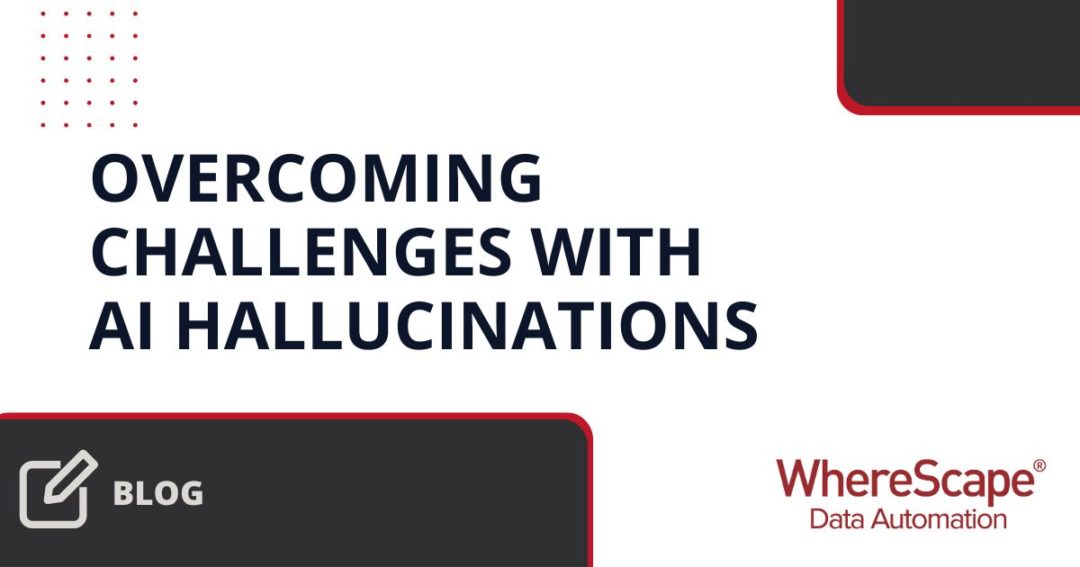
Overcoming Challenges with AI Hallucinations
Conversing with your digital assistant on your smartphone, using facial recognition for security, traveling in autonomous vehicles, or browsing recommended products based on your search history - there is no denying AI is embedded in many aspects of our lives. AI has...
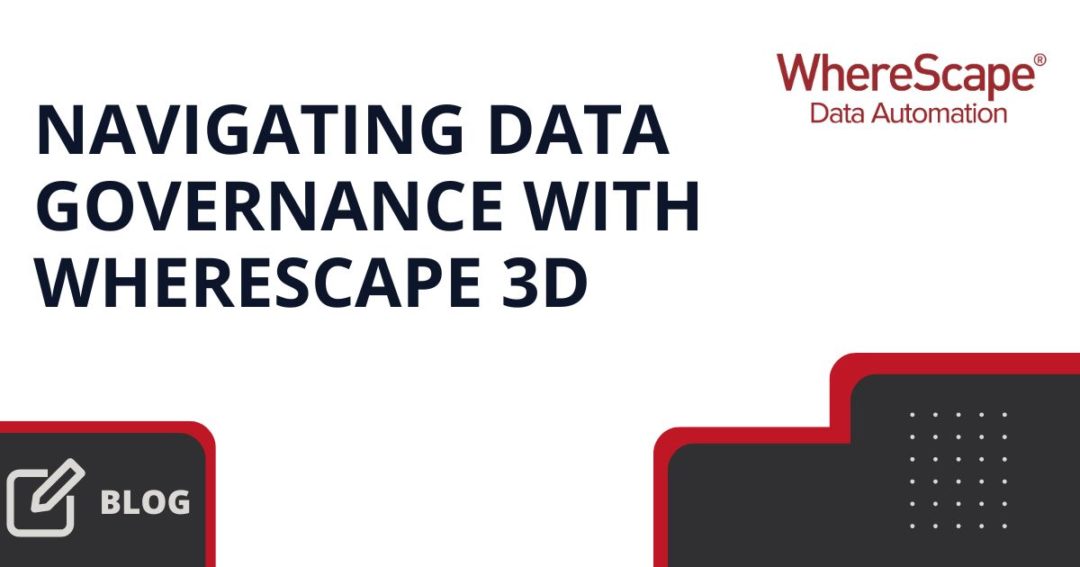
Navigating Data Governance with WhereScape 3D
Properly managing and organizing data allows businesses to not only understand crucial patterns and trends, but also to leverage that data in strategic ways that grow revenue over time. Data drives decision-making and paves the way for innovation when used properly....

Deep Dive into WhereScape RED: Features and Benefits
Transforming a business’s various databases and files into actionable insights and reports is crucial, but incredibly time-consuming with traditional tools. Fortunately, with data warehouse automation tools like WhereScape RED, organizations can take advantage of a...
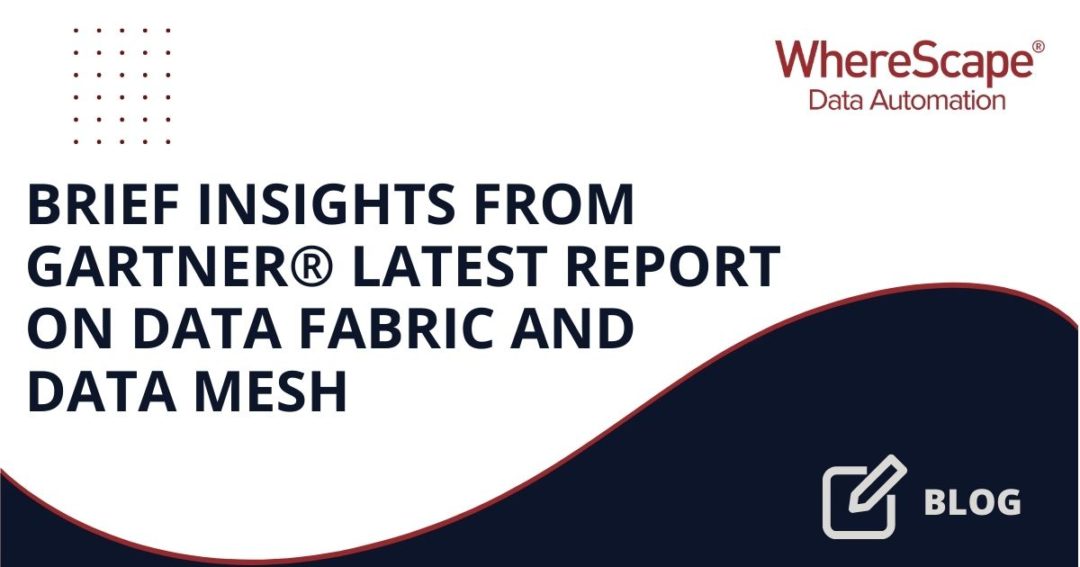
Brief Insights from Gartner® Latest Report on Data Fabric and Data Mesh
In the rapidly evolving world of data management, distinguishing between the myriad of strategies and technologies can be daunting. The latest Gartner® report, "How Are Organizations Overcoming Issues to Start Their Data Fabric or Mesh?" provides critical insights...


